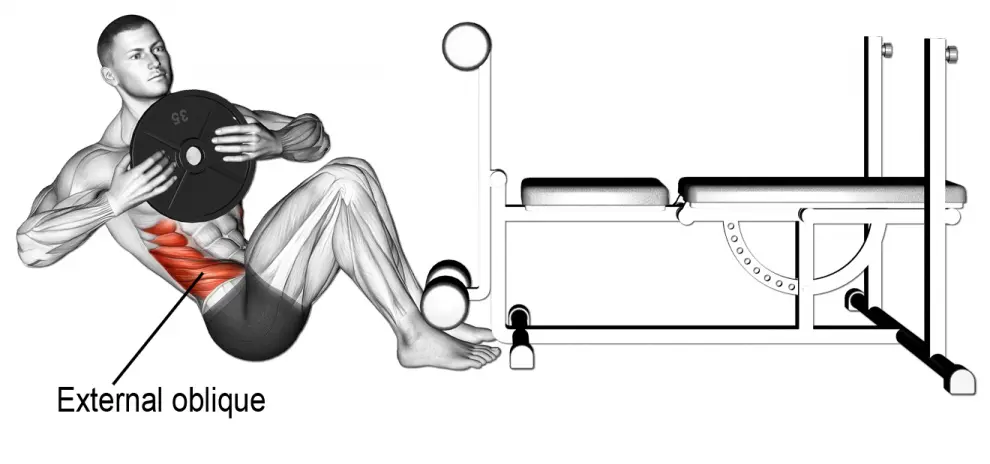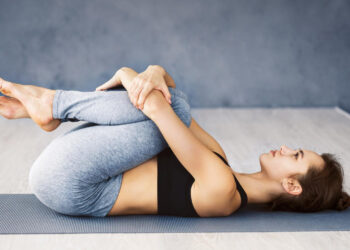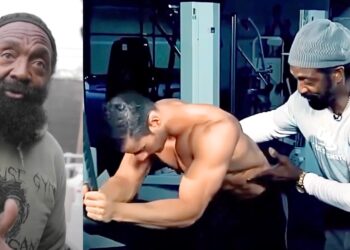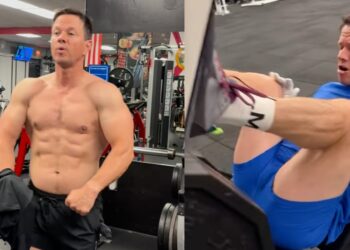If you want a lean, toned midsection, you need to do more than lots of crunches and sit-ups. These exercises work your rectus abdominus, which is the muscle on the front of your abdomen. If you really want to build the best midsection possible, you also need to work your obliques. Your obliques are basically your waist muscles.
When well-developed, your obliques “frame” your abs to show them at their best. The function of your obliques is lateral flexion and rotation of your spine. This means they are responsible for bending your torso sideways and twisting. They are heavily involved in movements like throwing, punching, and kicking.
One of the most popular oblique exercises is Russian twists. While Russian twists are a lot of people’s go-to oblique exercise, there might be better exercises you can choose.
How to do Russian twists
Like any exercise, you’ll get more from Russian twists if you learn to do them correctly. In fact, when done with proper form, Russian twists are a decent core exercise.
1– Sit on the floor with your legs bent, feet on the floor. Sit up, so your upper body is inclined to about 45 degrees.
2– Extend your arms out in front of you. Hold a medicine ball or weight in your hands if required.
Level Up Your Fitness: Join our 💪 strong community in Fitness Volt Newsletter. Get daily inspiration, expert-backed workouts, nutrition tips, the latest in strength sports, and the support you need to reach your goals. Subscribe for free!
3– Without lifting or lowering your torso, rotate your upper body to the right and then to the left. Move slowly and smoothly to keep the tension on your abs. Rotate your upper body as far as your flexibility allows.
4– You can also do this exercise with your feet off the floor. This increases instability and difficulty but also increases the number of things you could do wrong.
Providing you do this exercise correctly; it will give your abs and obliques a decent workout. But that’s the problem – a lot of exercisers can’t or won’t do them correctly. Common Russian twist faults include:
- Using too much weight
- Moving too fast
- Twisting the legs one way and the shoulders the other, which increases stress on the lower back – especially if you hold your feet off the floor
- Only moving the arms and not the waist
While these problems can often be fixed by doing the exercise more slowly and using a more controlled action, many exercisers find it better to simply stop doing Russian twists and do something more effective instead.

Five Aalternatives to Russian twists
Even if you can do Russian twists properly, you shouldn’t rely on this one exercise for all your oblique training. Studies suggest that exercise variety is vital for building muscle and strength. You’ll get better results if you include several different oblique exercises in your core workouts (1).
1. Stability ball Russian twist
This exercise forces you to use a slow, controlled tempo and helps keep your spine in a neutral, safe position. It will also develop your balance and works your glutes and hamstrings at the same time. Finally, it’s an excellent way to mobilize your upper and lower spine.
How to do it:
- Sit on a stability ball. Lean back and walk your feet forward until the ball is directly under your shoulders. The back of your head should also rest on the ball.
- Extend your arms in front of you and clasp your hands together. Lift your butt, so your knees, hips, and shoulders form a straight line.
- Rotate your upper body and roll over and onto your shoulder. Turn your upper body as far as your flexibility allows. Return to the center and then do your next rep to the opposite side. Make this exercise harder by holding a dumbbell or kettlebell.
2. High to low cable wood chops
This exercise works one side of your obliques at a time. With no real balance component, this is a good exercise if you want to use heavier weights and really challenge your waist muscles.
How to do it:
- Set the handle on a pulley machine to about head-height. Stand sideways on to the handle and grab it in both hands. Straighten your arms and stand with your feet shoulder-width apart, knees slightly bent for stability.
- Without bending your arms, turn your shoulders through around 180-degrees. Bring your hands down to hip-height. Return to the starting position and repeat. Do the same number of reps on each side.
- You can also do this exercise starting with the handle lower down, lifting your arms up as you twist. This is called a low to high cable woodchop.
3. Pallof presses
The Pallof press is an isometric oblique exercise. Isometric means the target muscles work statically. The obliques are under a lot of tension, but they do not produce any movement. This is a good exercise for anyone who can’t really feel their obliques working during things like Russian twists or cable woodchops.
How to do it:
- Set the handle on a pulley machine to about chest-height. Stand sideways on to the handle. Grab it handle in both hands.
- With your abs braced and without twisting your hips or shoulders, push the handle straight out in front of you, pause, and then pull it back to your chest.
- Repeat for the required number of reps and then turn and face the opposite direction to repeat on the other side.
You can also do this exercise with an exercise band anchored at chest-height.
4. Full contact twists
Ready for a more advanced oblique exercise? Full contact twists are a tough, challenging move, but they’ll really strengthen your waist and core.
How to do it:
- Put the end of a barbell in a corner and weigh it down with a sandbag. Alternatively, use a landmine core trainer.
- Stand at the other end of the bar and grab it with both hands. Raise your arms above your head. Brace your abs and push down on the barbell, even though it won’t move in that direction.
- Keeping your abs tight, twist your upper body, and lower your arms down to your left side. Remember to keep pushing forward the whole time. Turn your hips and feet in the same direction as your arms.
- Raise your arms up and then lower them to the right side. Keep going until you have completed all the required reps.
Make this exercise harder by adding weight to the bar. This is a tough exercise, so, for many, an empty bar will be hard enough.
5. Windshield wipers
So far, all the oblique exercises we’ve discussed have used some kind of equipment. Windshield wipers are a bodyweight-only oblique exercise, which means they are ideal for doing at home.
How to do it:
- Lie on your back with your arms outstretched on the floor, hands at shoulder-level.
- Lift your legs so that they are straight and perpendicular to the floor.
- Rotate your hips and lower your legs down towards the floor. Lift your legs back up and repeat to the opposite side. Continue alternating sides for the duration of your set. Keep your shoulders down and your arms flat on the floor throughout.
If doing this exercise with straight legs is too challenging, bend your legs to shorten the lever and make it easier. Gradually extend your legs as you get stronger.
Conclusion
There is nothing inherently wrong with Russian twists, other than doing them improperly could cause injury. However, that’s true about almost every exercise you can think of! But, if you want a less risky exercise, use any of the five alternatives described above. They are all as effective as Russian twists, but much harder to do wrong. They will also add some much-needed variety to your core workouts.
References:
- Journal of Strength and Conditioning Research:Changes in Exercises Are More Effective Than in Loading Schemes to Improve Muscle Strength https://journals.lww.com/nsca-jscr/fulltext/2014/11000/Changes_in_Exercises_Are_More_Effective_Than_in.9.aspx








